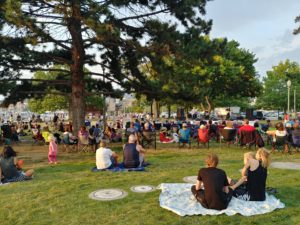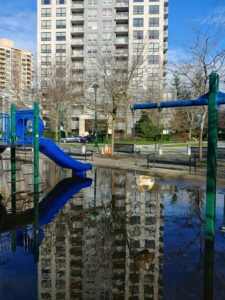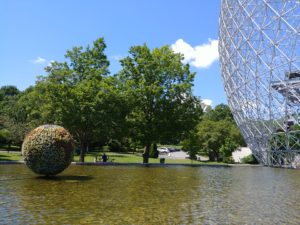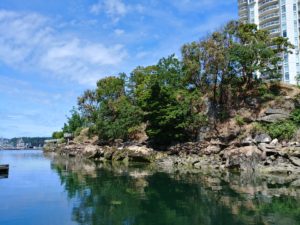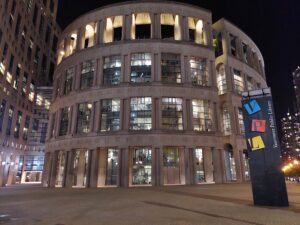In this post, I briefly explore the concept, principles, and practices of holistic urban productivity or regenerative sustainability as an emerging theory in Sustainable Community Development (SCD) and I introduce a conceptual framework for regenerative urban sustainability.
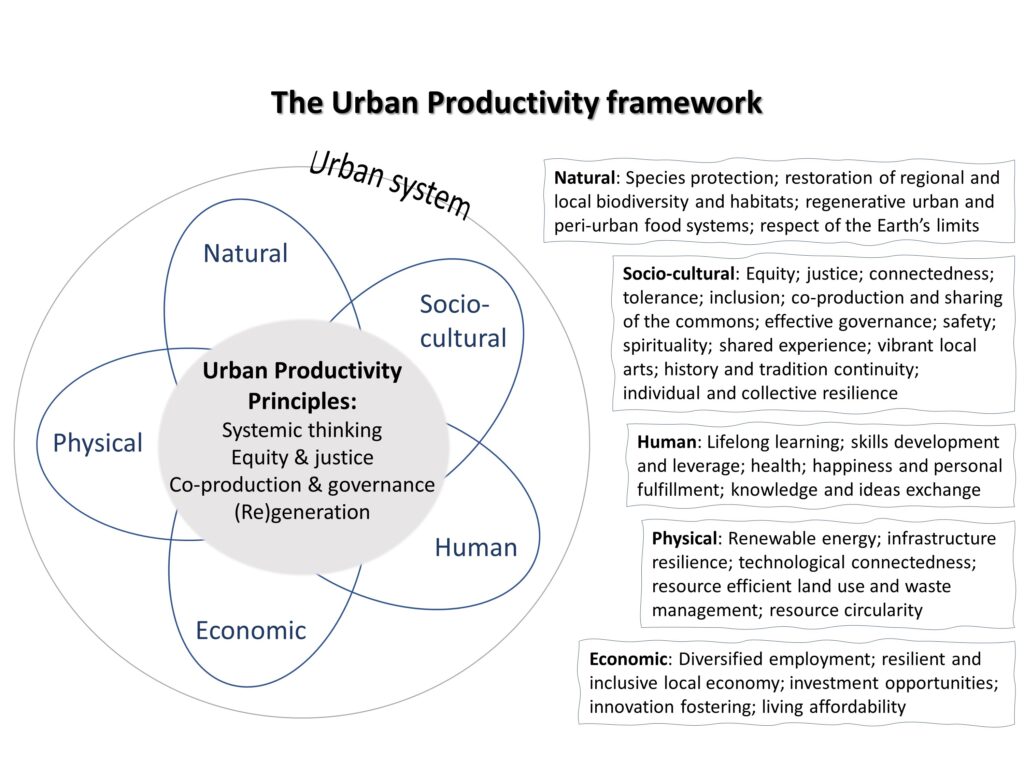
The full paper was published in the journal Local Environment: The International Journal of Justice and Sustainability in September 2020.
Managing the urban commons sustainably requires more bottom-up initiatives and movements, new policies (but not necessarily new technologies), and new narratives beyond the growth/degrowth discourse. Integrated and forward-looking decision-making can support a transformation from the currently dominant individualistic approach of impact reduction and resource extraction to the systemic approach of urban systems restoration and co-production. While it is clear that such transformation will not be achieved in one day, cities need guidance toward sustainable, meaningful, and synergistic and resource-constrained decision-making.
The emerging SCD concept of holistic urban productivity or regenerative sustainability can help cities address constraints and create fundamental changes in urban processes to achieve optimization and regeneration of tangible and intangible assets. Although productivity is historically associated with economic and other resources, holistic and regenerative urban productivity is interdisciplinary, multi-dimensional, and grounded in strong sustainability principles.
Conceptually, holistic urban productivity is informed by numerous theories and approaches, including traditional forms of knowledge that have been left out of the sustainability discourse in the past. These include: Total Factor Productivity; urban metabolism, resource regeneration, and circularity; urban ecosystem restoration and biophilia; urban fabric optimization through regenerative design and low ecological footprint; regenerative sustainability through holistic and collaborative planning; socio-cultural equity, justice, and connection; inclusive decision-making and commons co-managing processes; and above all whole-systems thinking to converge all the above and help identify synergies for equitable urban transformation.
Operationally, urban productivity has manifested in the form of context-specific or sector-specific projects that are not siloed; each one’s positive impact extends across multiple community dimensions and stakeholders. Initiatives such as restorative justice programs, reclaimed and regenerated spaces, free community-run libraries, innovation districts with green space and transit hubs, social innovation and sharing economy, and inclusive training for young entrepreneurs, can be found worldwide, from Vancouver, Canada, and Kigali, Rwanda, to Copenhagen, Denmark, and Medellín, Colombia.
In practice, cities develop sustainability plans often aided by one of many available frameworks and tools that support local sustainability decision-making. For my doctoral research, I consulted many tools for local sustainability planning, implementation, and assessment, such as the Community Capital Framework and Tool, the UN SDGs, the Global Resilient Cities Network, ISO37120 Sustainable cities and communities, LEED v4.1 Cities and Communities, the International Eco-City Standards, the EU Reference Framework for Sustainable Cities, and the Canadian Community Well-Being Index. Not all tools however address urban challenges with a systemic approach and attention to collective action, social inclusion, and equity. The concept of holistic and regenerative local sustainability can help cities identify the underlying causes of current unsustainable paths and tackle procedural, institutional, and other challenges in a transformative and systemic manner to restructure their systems.
I propose a holistic framework that supports restoration and balanced optimization of all urban assets and resources: socio-cultural, natural, economic, physical, and human. The framework includes a set of four interconnected -and equally foundational- principles: whole-systems, future-oriented, and long-term thinking; equity and justice through solidarity, sharing networks, and collective efforts that respect diversity; urban co-production and inclusive governance that embraces local and traditional forms of knowledge; and (re)generation of tangible and intangible urban assets.
Enhancing and sustaining holistic sustainability entails investment by ideally all community actors to build and implement a vision that includes goals such as: local biodiversity restoration; regenerative urban food systems; equity, justice, and safety; individual and collective resilience; lifelong learning and skills development; happiness and personal fulfillment; renewable energy; technological connectedness; material resource circularity; diversified employment; inclusive local economy, and living affordability. To measure progress and identify synergies for transformative action, I also propose indicators for the productive, regenerative, and socio-cultural aspects of the community, to be used in addition to the more mainstream sustainability indicators.
On a final note, context matters when planning for and implementing sustainability strategies and actions. Political and other priorities and goals differ, as do issues and decision-making processes, so best practices may not be transferable or easily implemented in every community. While trade-offs may be unavoidable to some extent, contextual analysis and broad societal collaboration can make synergies visible, so that operationalization of urban sustainability through holistic and regenerative productivity goals and action becomes inclusive and adaptive.
Bibliography
Beatley, T. (2017). Biophilic cities and healthy societies.Urban Planning,2(4), 1–4. https://doi.org/10.17645/up.v2i4.1054
Diez, T. (2017).Fab City Whitepaper: Locally productive, globally connected self-sufficient cities.
Du Plessis, C. (2012). Towards a regenerative paradigm for the built environment.Building Research & Information,40(1), 7–22. https://doi.org/10.1080/09613218.2012.628548
Ellen MacArthur Foundation. (2017).Cities in the Circular Economy: An initial exploration.
Elmqvist, T., Andersson, E., Frantzeskaki, N., McPhearson, T., Olsson, P., Gaffney, O., Takeuchi, K., & Folke, C. (2019). Sustainability and resilience for transformation in the urban century.Nature Sustainability,2(4), 267–273. https://doi.org/10.1038/s41893-019-0250-1
Girardet, H. (2015).Creating Regenerative Cities. Routledge.
Hamman, P. (2017). Definitions and Redefinitions of Urban Sustainability: A Bibliometric Approach.Urban Environment,11(April).
Joss, S., Cowley, R., De Jong, M., Müller, B., Park, B. S., Rees, W. E., Roseland, M., & Rydin, Y. (2015).Tomorrow’s City Today: Prospects for standardising sustainable urban development.
Kaika, M. (2017). ‘Don’t call me resilient again!’: The New Urban Agenda as immunology … or … what happens when communities refuse to be vaccinated with ‘smart cities’ and indicators.Environment and Urbanization,29(1), 89–102. https://doi.org/10.1177/0956247816684763
Mang, P., & Reed, B. (2019). Regenerative Development and Design.Encyclopedia of Sustainability Science and Technology, 1–28. https://doi.org/10.1007/978-1-4939-2493-6_303-4
McLaren, D., & Agyeman, J. (2015).Sharing Cities. MIT Press.
Mclaren, D., & Agyeman, J. (2017). Sharing Cities.Environment: Science and Policy for Sustainable Development,59(3), 22–27. https://doi.org/10.1080/00139157.2017.1301168
Moore, J., & Rees, W. E. (2013). Getting to One-Planet Living. In Worldwatch Institute (Ed.),State of the World 2013. Island Press.
Raworth, K. (2017). A Doughnut for the Anthropocene: Humanity’s compass in the 21st century.The Lancet Planetary Health,1(2), e48–e49. https://doi.org/10.1016/S2542-5196(17)30028-1
Robinson, J., & Cole, R. J. (2015).Theoretical underpinnings of regenerative sustainability.Building Research and Information,43(2), 133–143. https://doi.org/10.1080/09613218.2014.979082
Roseland, M. (2012).Toward Sustainable Communities: Solutions for Citizens and Their Governments(4th ed.). New Society Publishers.
Roseland, M., & Spiliotopoulou, M. (2017). Sustainable Community Planning and Development. In M. A. Abraham (Ed.),Encyclopedia of Sustainable Technologies(Vol. 2). Elsevier. https://doi.org/10.1016/B978-0-12-409548-9.10185-X
Spiliotopoulou, M., & Roseland, M. (2020). Theories and concepts influencing sustainable community development: Introducing the concept of community productivity. In R. Phillips, E. Trevan, & P. Kraeger (Eds.),Research Handbook on Community Development. Edward Elgar Publishing.
Thomson, G., & Newman, P. (2018). Urban fabrics and urban metabolism – from sustainable to regenerative cities.Resources, Conservation and Recycling,132, 218–229. https://doi.org/10.1016/j.resconrec.2017.01.010
Wahl, D. C. (2016).Designing Regenerative Cultures. Triarchy Press.
Wolfram, M. (2016). Conceptualizing urban transformative capacity: A framework for research and policy.Cities,51, 121–130. https://doi.org/10.1016/j.cities.2015.11.011
Woo, F., Wortmann, J., Schurig, S., & Leidreiter, A. (2014).Regenerative Urban Development: A Roadmap to the City We Need.










